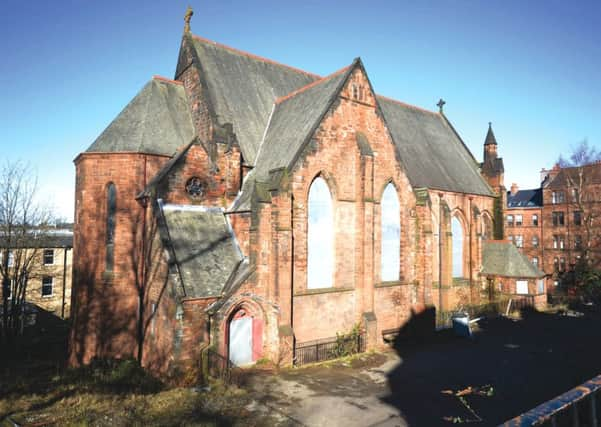Commercial property: Valuations a matter of faith in church sales


However, times change and buildings which were designed to accommodate congregations of hundreds now struggle to attract worshippers.
This poses a dilemma for church authorities which, increasingly over recent years, have been forced into disposal programmes to rationalise the estate and to raise funding to maintain and restore remaining church buildings.
Advertisement
Hide AdAdvertisement
Hide AdBut it also creates a serious challenge for surveyors tasked with valuation of buildings with a vast range of differing characteristics, often in the absence of discernible trends or comparable sales evidence.
The sale of church buildings is not new but disposal has to be seen in the context of the historic scale of the church estate in Scotland, which runs into thousands of buildings.
New church provision ran at a frantic pace through the 17th, 18th and 19th centuries. After the Great Disruption of 1843, the Free Church of Scotland alone built more than 700 new places of worship by 1847. The established church added more than 500 parishes between 1843 and 1909. Competition, naturally, led to oversupply.
That is the legacy now being dealt with. Congregations in close proximity to each other may decide to amalgamate and sell off one of their churches to raise capital for the maintenance of the remaining one.
Though our commercial department has compiled its own substantial body of evidence in this specialised arena, the range of buildings, disparity of styles and vagaries of location make like-for-like comparison uniquely difficult.
While church buildings have their own issues – traditionally built from sandstone, pitched slate roofs, often listed – there are buyers out there.
Other faith groups may see the option of an existing church as a cheaper alternative than building their own place of worship.
And many churches fall into the Class 10 category in the Town and Country Planning (Use Classes) (Scotland) Order 1997, meaning that they are in the same use category as children’s nurseries, créches, libraries, meeting halls, exhibition halls and some education facilities.
Advertisement
Hide AdAdvertisement
Hide AdSome obsolete churches have also been acquired by community groups which have secured funding and are attracted by good sized floorplates.
In general terms, the more marketable church buildings tend to be located in urban areas, often benefitting from adequate parking provision and distinctive architectural features. Developers can justify the cost of conversion to flats.
One such example would be the disposal of the Grade B listed church on Great George Street in Glasgow’s West End, with DM Hall acting on behalf of London & Scottish Investments. Interest levels were considerable, resulting in a closing date.
The buyer is creating 21 flats in the original church building, and three new build units.
The economics of conversion, however, may not add up in lower value areas – even if the church was similar – because the values on completion would be significantly less attractive.
Rural church buildings, with a lack of services, those sur- rounded by graveyard grounds or in disrepair are often subjected to protracted marketing campaigns and some are ultimately disposed of via the route of an auction.
So, while the number of properties coming to market is only likely to increase, it will become no easier to paint a picture of the market in general and surveyors will essentially have to continue to provide a bespoke valuation process in this specialised area.
Adam Jennings is a surveyor at DM
Hall Chartered Surveyors